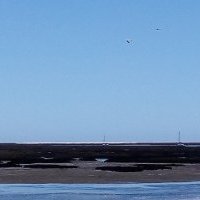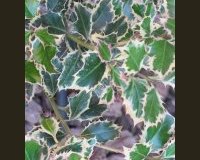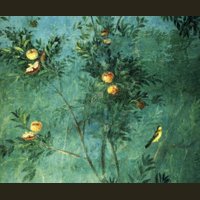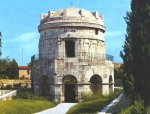accueil site > 45. Archives > Paysage et patrimoine > 01. Teaching materials > 03. Secondary school > Natural environment and Therodoric’s mausoleum.
-
45. Archives
-
Paysage et patrimoine
-
01. Fiches pédagogiques
Disciplines
-
01. Teaching materials
Disciplines
-
02. Jardin sans frontière : une école pour développer les compétences -clés en Europe
- 04. Partenaires
- 05. Rencontres transnationales
- 14. À l’école du jardin. Mobilités de formation dans les jardins d’Europe
- 15. À l’école européenne du jardin. Paroles de formateurs sur leurs formations "entre pairs"
- 16. A l’école auropéenne du jardin. Paroles d’apprenants sur leurs mobilités Erasmus+
- 19. Petit glossaire "européen" du jardin
- 20. Dissémination
- 21. Exploitation locale du projet
- 03. Un nouvel Erasmus+ : Le bleu européen comme étendard contre l’exclusion des adultes
-
09. Erasmus+ partenariato
-
Cammini del Blu in Europa
- 01. Incontri transnazionali
- 05. Progetti blu di partners
- 10. Percorsi europei del Blu
- 20. Storie blu
- 40. Disseminazione
- 43. Transcultural Carpet Blue
- 45. Missive blu
- 46. Glossario blu
- 47. Schede didattiche "Pedagogia del colore blu in Europa"
- 48. Illustrazioni delle schede didattiche : Mostra delle opere degli studenti
-
Giardino senza frontiere. Una scuola per lo slivuppo di competenze chiave in Europa
- 04. Partners
- 05. Riunioni transnazionali
- 14. Alla scuola del giardino. Mobilità di formazione nei giardini d’Europa
- 15. Alla scuola del Giardino. Parole di formatori sul loro addestramento "tra pari"
- 16. Alla scuola del giardino. Parole dei discenti sul loro Erasmus + Mobilità
- 19. Piccolo glossario europeo del giardino
-
Cammini del Blu in Europa
-
11. Erasmus+ Partnership
- 01. Transnational Meetings
- 05. Blue Projects of partners
- 07. European roads of the Blue
- 10. Blue stories
- 40. Dissemination
- 43. Transcultural Carpet Blue
- 45. Blue Missives
- 46. Blue Glossary
- 48. Roads of the blue : the file
- 50. Illustrations of the pedagogic file : exhibition of works of learners
-
51. Garden Without Borders : A School for Developing Key Competences in Europe
- 04. Partners
- 05. Transnational meetings
- 14. At Garden School. Training mobilities in the gardens of Europe
- 15. At Garden School. Words of trainers on their "peer-to-peer" training
- 16. At Garden School. Learners’ words about their mobility Erasmus +
- 19. Small European glossary of the garden
- 20. Dissemination
-
11. Partenariats Erasmus+
-
01. Les chemins du bleu en Europe
- 01. Rencontres transnationales
- 05. Projets bleus des partenaires
- 10. Routes du Bleu en Europe ...
- 20. Histoires Bleues
- 40. Dissémination
- 43. Transcultural Carpet Blue
- 45. Missives bleues
- 46. Glossaire bleu
- 47. Formation pédagogique : fiches pédagogiques et référentiel de compétences clés et transversales
- 50. Illustrations des fiches pédagogiques : exposition des travaux des apprenants
-
01. Les chemins du bleu en Europe
- 12. Pedagogic tools
- 17. Fiches pédagogiques
- 17. Schede Pedagogiche
-
01. Fiches pédagogiques
- 05. Livre d’or des formations
- 07. Livre d’or des formations Comenius - Grundtvig
- 10. National
- 20. International
-
Paysage et patrimoine
Natural environment and Therodoric’s mausoleum.mardi 16 décembre 2008
![]() To know the geo-morphological history of Ravenna’s natural environment connected to Theodoric’s garden-park.
To know the geo-morphological history of Ravenna’s natural environment connected to Theodoric’s garden-park.
![]() To recognize the main environmental problems that regard the park and the city.
To recognize the main environmental problems that regard the park and the city.
![]() To build up a “grammar" of observation that opens up what is new and unusual.
To build up a “grammar" of observation that opens up what is new and unusual.
OBJECTIVES
![]() To develop the children’s abilities to see, perceive, select, single out shapes, sizes, depth, colours, textures and consistencies, the speed and positions of the organisms and landscapes that formed in that place throughout history.
To develop the children’s abilities to see, perceive, select, single out shapes, sizes, depth, colours, textures and consistencies, the speed and positions of the organisms and landscapes that formed in that place throughout history.
![]() To be able to classify plants and animals according to scientific classification systems and to learn a few general concepts of land ecology.
To be able to classify plants and animals according to scientific classification systems and to learn a few general concepts of land ecology.
SKILLS
![]() To pick up the relationship between monument, natural environment and the history of the surrounding landscape.
To pick up the relationship between monument, natural environment and the history of the surrounding landscape.
![]() With old and modern geographical maps about the evolution of the coast and of the Po delta, to recognize the links between the various stages of the evolution of the territory and explain the origin of the present humid milieus of the coast.
With old and modern geographical maps about the evolution of the coast and of the Po delta, to recognize the links between the various stages of the evolution of the territory and explain the origin of the present humid milieus of the coast.
![]() To reconstruct the evolution of the coast of Romagna throughout ages (pre-historic, Etruscan, Roman, Early Middle-Ages, 10th to 16th centuries and later) to understand the importance of fossil dunes, of lagoons and valleys.
To reconstruct the evolution of the coast of Romagna throughout ages (pre-historic, Etruscan, Roman, Early Middle-Ages, 10th to 16th centuries and later) to understand the importance of fossil dunes, of lagoons and valleys.
![]() To recognize local vegetal species living in the park and natural environment.
To recognize local vegetal species living in the park and natural environment.
![]() To raise an archaeological and ecological hypothesis to reconstruct the ancient place of the monument in Byzantine times.
To raise an archaeological and ecological hypothesis to reconstruct the ancient place of the monument in Byzantine times.
MATERIALS
![]() A geographical album with the successive representations of the coast throughout ages.
A geographical album with the successive representations of the coast throughout ages.
![]() A natural herbarium, small pieces of cardboard and a notebook to take down observations.
A natural herbarium, small pieces of cardboard and a notebook to take down observations.
![]() Pencils, glue, a box of paints, felt pens, boxes of various sizes, decorating paper.
Pencils, glue, a box of paints, felt pens, boxes of various sizes, decorating paper.
![]() Photocopies of pictures of the mausoleum in ancient times
Photocopies of pictures of the mausoleum in ancient times
![]() Literary documents.
Literary documents.
REFERENCES
![]() F. GIANNI, Istoria delle pinete ravennati, Roma, Published by Salomoni , 1774.
F. GIANNI, Istoria delle pinete ravennati, Roma, Published by Salomoni , 1774.
![]() “Raccolta fotografica vecchia Ravenna", Nuovo Ravennate from Mirabilia, Ravenna, Longo Editore, 1990.
“Raccolta fotografica vecchia Ravenna", Nuovo Ravennate from Mirabilia, Ravenna, Longo Editore, 1990.
![]() “Flora e vegetazione delle pinete di Ravenna e territori limitrofi tra la terra e il mare", Forlì, Pub. Valbonesi, 1936.
“Flora e vegetazione delle pinete di Ravenna e territori limitrofi tra la terra e il mare", Forlì, Pub. Valbonesi, 1936.
![]() WWW de Ravenna : cards about the humid areas.
WWW de Ravenna : cards about the humid areas.
![]() Anonimo Valesiano, M.G.H. Chronica Minora, saecula IV, V, VI, VII, Consularia Italica, published by Mommsen, Berlin 1982.
Anonimo Valesiano, M.G.H. Chronica Minora, saecula IV, V, VI, VII, Consularia Italica, published by Mommsen, Berlin 1982.
PROCEDURES
Visit the valleys, the lagoons and the last coastal dunes.
Ask the children to collect natural materials, especially “pioneer" plants which grow on the dune, the shrubs and trees of the small valleys behind the dunes, water plants in a brackish environment.
Ask them to compare with the local species that live in the park.
They compare today’s geographical maps of the evolution of the coastline with those of different ages : they see how the evolution of the coastal environment is connected with the movements of the sands brought by the rivers (mainly the Po) and the formation of dunes.
They visit Theodoric’s mausoleum and the park around it, they compare the historical maps and raise an hypothesis about its place in relation with its environment in its time.
The ask each pupil to write down the sensations the mausoleum arouses in them when they observe it from outside or inside.
The group reads what has been written down and talk about ancient and contemporary funeral architectures and about the landscape.
The children reconstruct the possible landscapes on dioramas, they draw maps or painted graphical representations.
FOLLOW-ON ACTIVITIES
Starting from the discovery of the small Byzantine boat near the mausoleum, to study the activities of the ancient local people.
To study environmental problems : subsidence, the degradation of air due to the nearby industrial area, to urban traffic, to the pollution of ground water.
TRANSPOSITION
With higher grades you can widen the pedagogical approach with the study of the great drainings of the Ravenna area that led to the current aspect of the territory.
As the park and mausoleum are a spectacular and superficial tourist spot and as they are more regarded as an economic resource, compare the learned and motivated Grand Tour traveller with today’s trend for mass tourism : reconsider the image of the traveller and the passer-by with their values of hospitality, readiness to welcome, protect and keep, and “destroy" that of today’s tourist.
ASSESSMENT
The children will be assessed on their capacity
![]() to discover and invent
to discover and invent
![]() to build up a list of key-words which become the lemmas of a hypothetical catalogue of the environment and landscape around the mausoleum.
to build up a list of key-words which become the lemmas of a hypothetical catalogue of the environment and landscape around the mausoleum.
Roberto Papetti, directeur centre écologie, la Lucertola, Ravenna


















 Version imprimable
Version imprimable
